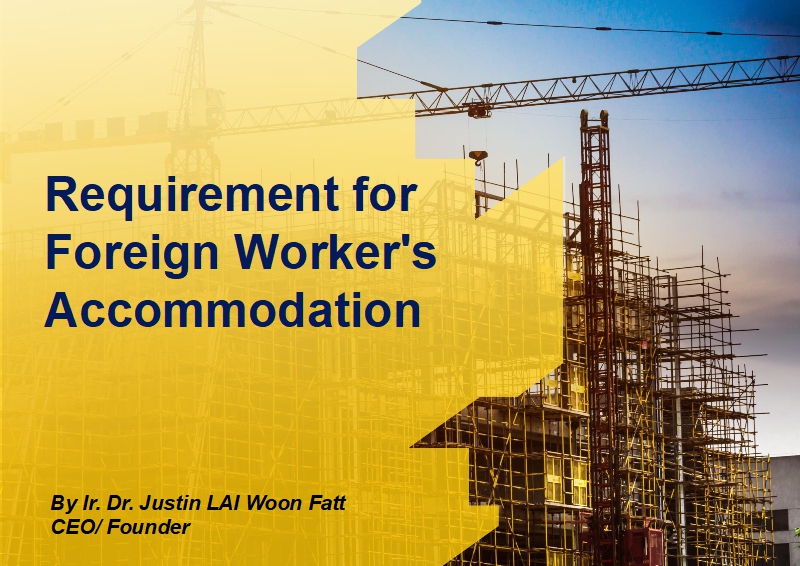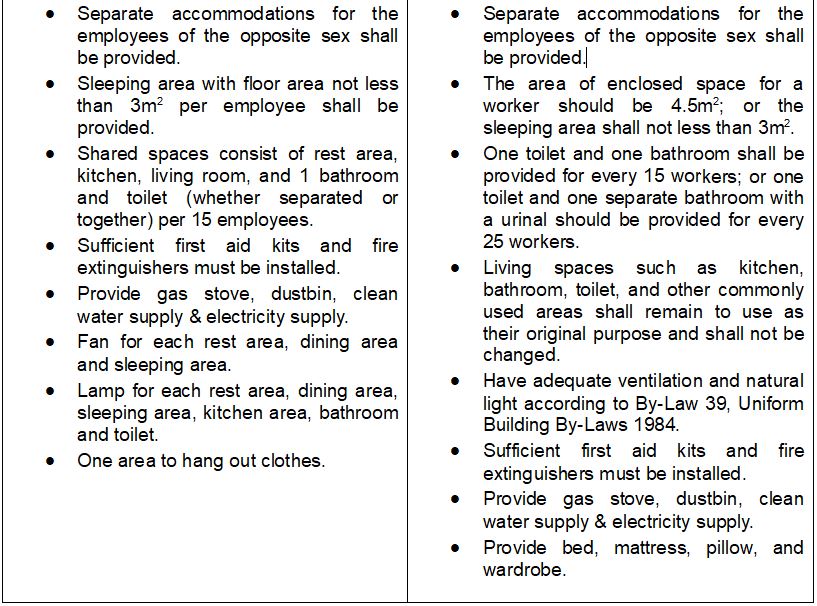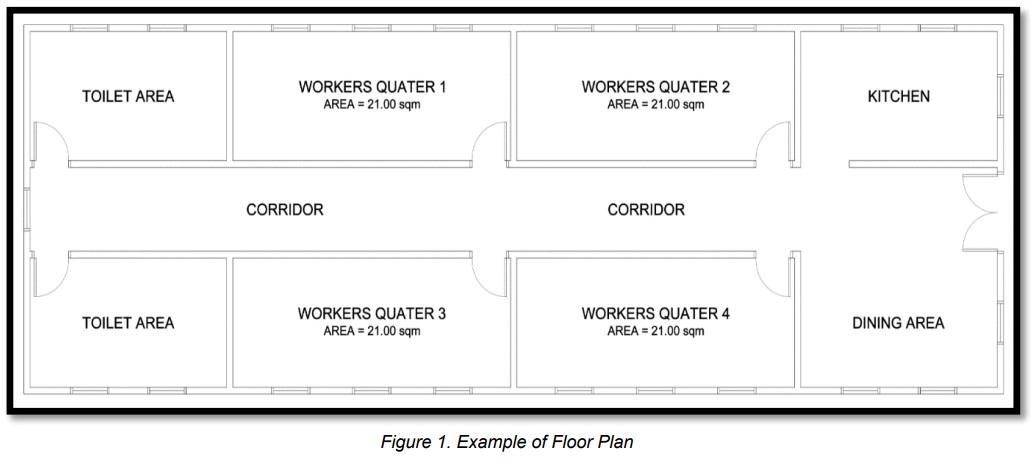Author: Ir. Dr. Justin LAI Woon Fatt | 29 December, 2020
INTRODUCTION
In recent news, well-known factories have been fined RM50, 000 on each foreign worker due to overcrowded dormitories and unqualified requirements. This has sparked awareness among the industries and employers to review their workers’ accommodation, to ensure it complies with the regulations.
For all workers’ accommodations built to comply with the regulations, industries must submit their workers’ accommodations design to the local authority. Some local authorities may even request for the submission of the Temporary Development Order due to the integration of the residential elements in the industrial land. The approval of the local authority for workers’ accommodations is a part of the requirement of Jabatan Tenaga Kerja (JTK) to acquire the Accommodation Certificate.
If the workers are staying at a permanent building, the prerequisites to get the Accommodation Certificate is to have a Certificate of Completion and Compliance (CCC) for the building. Since most workers’ quarters are cabin or modular type of accommodations, it would have been classified as a temporary building. Therefore, the prerequisite is to have a Temporary Building Permit before getting the Accommodation Certificate [1]. A Temporary Building Permit issued by the local authority is intended to allow temporary buildings to exist only for a period of time. The permit duration will be dependent on the condition imposed by the local authority. For this Temporary Building Permit, only the relevant local departments such as the Local Authority Building Department and Local Authority Engineering Department will be involved, while external departments such as Firefighting Department from each state (Jabatan Bomba dan Penyelamat Negeri) may get involved if necessary [2].
REGULATION GUIDELINES
What are the other elements required from the regulations provided by the guidelines?
**Take note that the above-listed requirements do not cover everything from the guidelines. It covers some parts of the planning and design for the submission of the dormitory’s Temporary Building Permit.
AN EXAMPLE OF A SUITABLE LAYOUT
As shown in Figure 1, the example floor plan has 4 workers quarters, where each of them has an area of 21 square meters. The suitable number of workers that can stay in one room is calculated as follows:
Since there are 4 workers quarters, the total number of workers staying under one roof would be 7 x 4 which is 28 workers.
In Figure 1, two toilets have been provided, where the toilets shown here have integrated bathroom facilities as well. Following Act 446 [1], every 15 workers should have been provided with 1 toilet, therefore there will be a maximum of 30 workers for the usage of the 2 toilets, which is sufficient for the 28 workers estimated.
The kitchen and dining area have been provided as well, while the garbage disposal area is located outside of the building, which is not shown in Figure 1. Finally, first aid kits and fire extinguishers should be installed near the exits and other locations to cover the whole building.
Important notes of workers’ accommodation:
- All facilities and space shall be used for the original intended purpose only, and it cannot be modified [3].
- Any changes related to the occupancy capacity will need to obtain new approval from local authorities [3].
CONCLUSION
These requirements are vital to ensure the well-being of the foreign workers staying in these accommodations as well. Hence, to ensure well-designed workers’ accommodations that comply with the regulations, employers should seek professional advice from qualified architects and engineers to avoid unnecessary fines.
Ir. Dr. Justin LAI Woon Fatt
CEO/ Founder
IPM Group
References:
[1] Employees’ Minimum Standards of Housing, Accommodations and Amenities (Accommodation and Centralized Accommodation) Regulations 2020). Retrieved on 15th December 2020 from http://jtksm.mohr.gov.my/images/akta446/9_Penginapanberpusat.pdf
[2] Ir. Dr. Justin LAI Woon Fatt (2020, May 09). Building Plan vs Temporary Building Permit. Retrieved on 17th December 2020 from https://ipm.my/building-plan-vs-temporary-building-permit/
[3] Garis Panduan Penetapan Standard Minimum Penginapan Pekerja Asing 2018. Retrieved on 17th December 2020 from http://jtksm.mohr.gov.my/images/pdf/Garis_Panduan/garis_panduan_penetapan_standard_minimum_penginapan_pekerja_asing_2018.pdf





